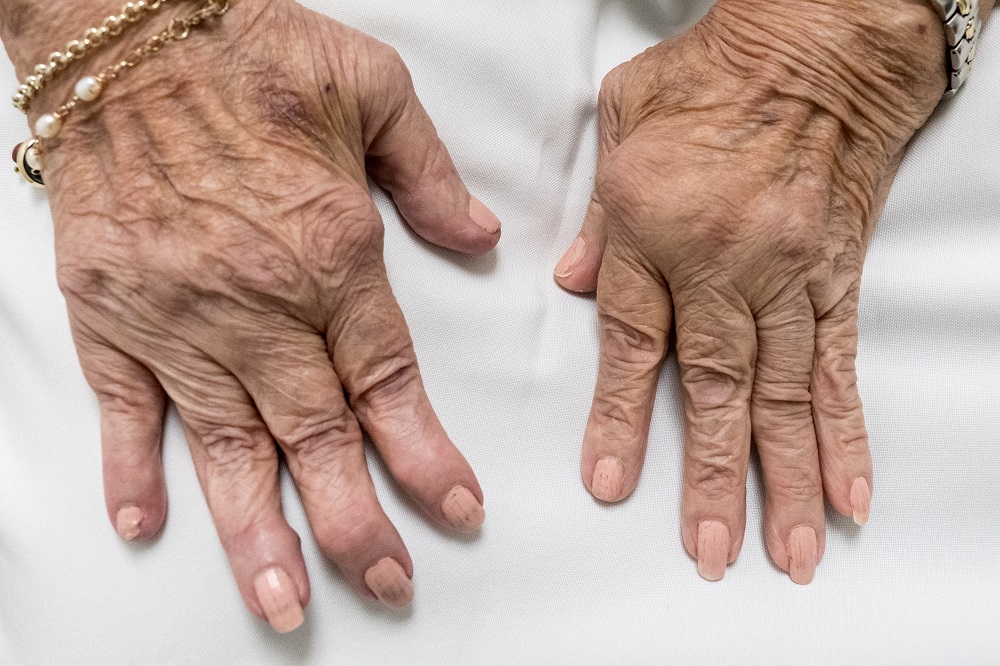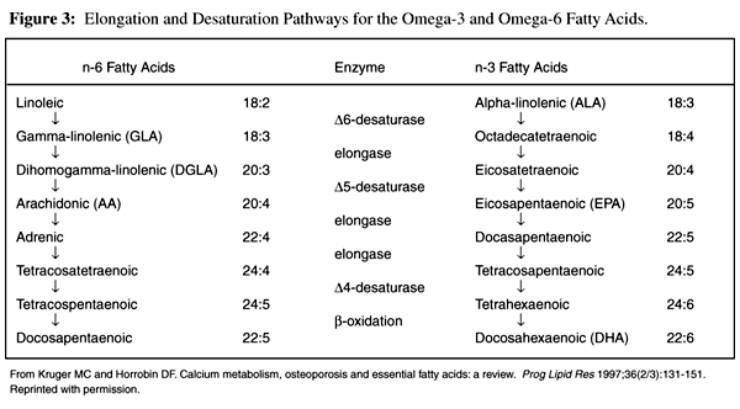Treatment of Rheumatoid Arthritis with Marine and Botanical Oils: An 18-month, Randomized, and Double-blind Trial
SOURCE: Evid Based Complement Alternat Med. 2014 (Mar 19)
George W. Reed, Katherine Leung, Ronald G. Rossetti, Susan VanBuskirk, John T. Sharp, and Robert B. Zurier
University of Massachusetts Medical School,
Department of Medicine,
Division of Preventive and Behavioral Medicine,
55 Lake Avenue North, Shaw Building,
Worcester, MA 01655, USA.
OBJECTIVE: To determine whether a combination of borage seed oil rich in gamma linolenic acid (GLA) and fish oil rich in eicosapentaenoic acid (EPA) and docosahexaenoic acid (DHA) is superior to either oil alone for treatment of rheumatoid arthritis (RA).
METHODS: Patients were randomized into a double-blind, 18–month trial. Mixed effects models compared trends over time in disease activity measures.
RESULTS: No significant differences were observed in changes in disease activity among the three randomized groups. Each group exhibited significant reductions in disease activity (DAS28) at 9 months (fish: –1.56[–2.16, –0.96], borage: –1.33[–1.83, –0.84], combined: –1.18[–1.83, –0.54]) and in CDAI (fish: –16.95[–19.91, –13.98], borage: –11.20[–14.21, –8.19], and combined: –10.31[–13.61, –7.01]). There were no significant differences in change of RA medications among the three groups. Reduced disease activity in study patients was similar to matched patients from an RA registry, and reduction in disease modifying antirheumatic drugs (DMARD) use was greater (P < 0.03) in study patients.
There are more articles like this @ our:
OMEGA-3 FATTY ACIDS Page and the:
CONCLUSION: All 3 treatment groups exhibited similar meaningful clinical responses after 9 months, improvements which persisted for 18 months, and a response similar to matched patients from an RA registry. Study patients were able to reduce DMARD therapy given in combination with TNF antagonists to a greater extent than registry patients. This paper is dedicated to the memory of Dr. John T. Sharp, M.D., a pioneer and innovator in the field of musculoskeletal radiology.
From the FULL TEXT Article:
Introduction
Abundant experimental evidence supports the view that eicosanoids participate in development and regulation of immunological and inflammatory responses. [1–4] Because essential fatty acids are precursors to eicosanoids and are important determinants of cell function, they influence immune responses. [5] A disease such as rheumatoid arthritis (RA), characterized by abnormal immune responses, inflammation, and joint tissue injury [6], may therefore be amenable to control by treatment with oils rich in particular polyunsaturated fatty acids.
Gamma linolenic acid (GLA: 18 : 3 omega 6) is an essential fatty acid found in borage seed oil. GLA is metabolized to dihomogamma linolenic acid (DGLA; 20 : 3 omega 6), the immediate precursor of prostaglandin E1 (PGE1), an eicosanoid with anti-inflammatory and immunoregulatory properties. [7] In addition, GLA cannot be converted to inflammatory leukotrienes by 5-lipoxygenase. Instead, it is converted to 15-hydroxy DGLA, which has the virtue of suppressing 5-lipoxygenase activity. [8] GLA and DGLA also modulate immune responses in an eicosanoid independent manner by acting directly on T lymphocytes [9], and GLA suppresses acute and chronic inflammation, including arthritis, in animal models. [10] More importantly, in several randomized, placebo-controlled trials in RA patients, GLA in borage or primrose seed oils reduced synovitis and the need for nonsteroidal anti-inflammatory agents. [11–13]
Fish oil, rich in eicosapentaenoic acid (EPA; 20 : 5 omega 3) and docosahexaenoic acid (DHA; 22 : 6 omega-3), suppresses formation of the inflammatory eicosanoids PGE2), thromboxane A2 (TXA2), and leukotriene B1 (LTB4). The which is produced is a far less potent mediator than LTB4. Each of 12 randomized, placebo-controlled, and double-blind trials of fish oil in RA documents clinical improvement, including reductions in duration of morning stiffness, number of tender joints, joint pain, time to fatigue, and increased grip strength. Those studies that monitored NSAID use suggest that fish oil treatment has an NSAID sparing effect. [14, 15]
A combination of EPA and GLA enriched oils exhibits synergy in reduction of synovitis in animal models [16], and treatment of RA patients with black currant seed oil, which contains both the n-3 fatty acid alpha linolenic acid (converts to EPA) and the n-6 GLA, suppresses synovitis in these patients. [17] These results suggest that a combination of GLA and EPA may be a more useful therapy for RA than each fatty acid alone. Therefore, we carried out a phase 3 trial of borage seed oil, fish oil, and a combination of the two oils in patients with RA and active synovitis, to determine whether the combination is superior to treatment with either oil alone.
Read the rest of this Full Text article now!




Leave A Comment